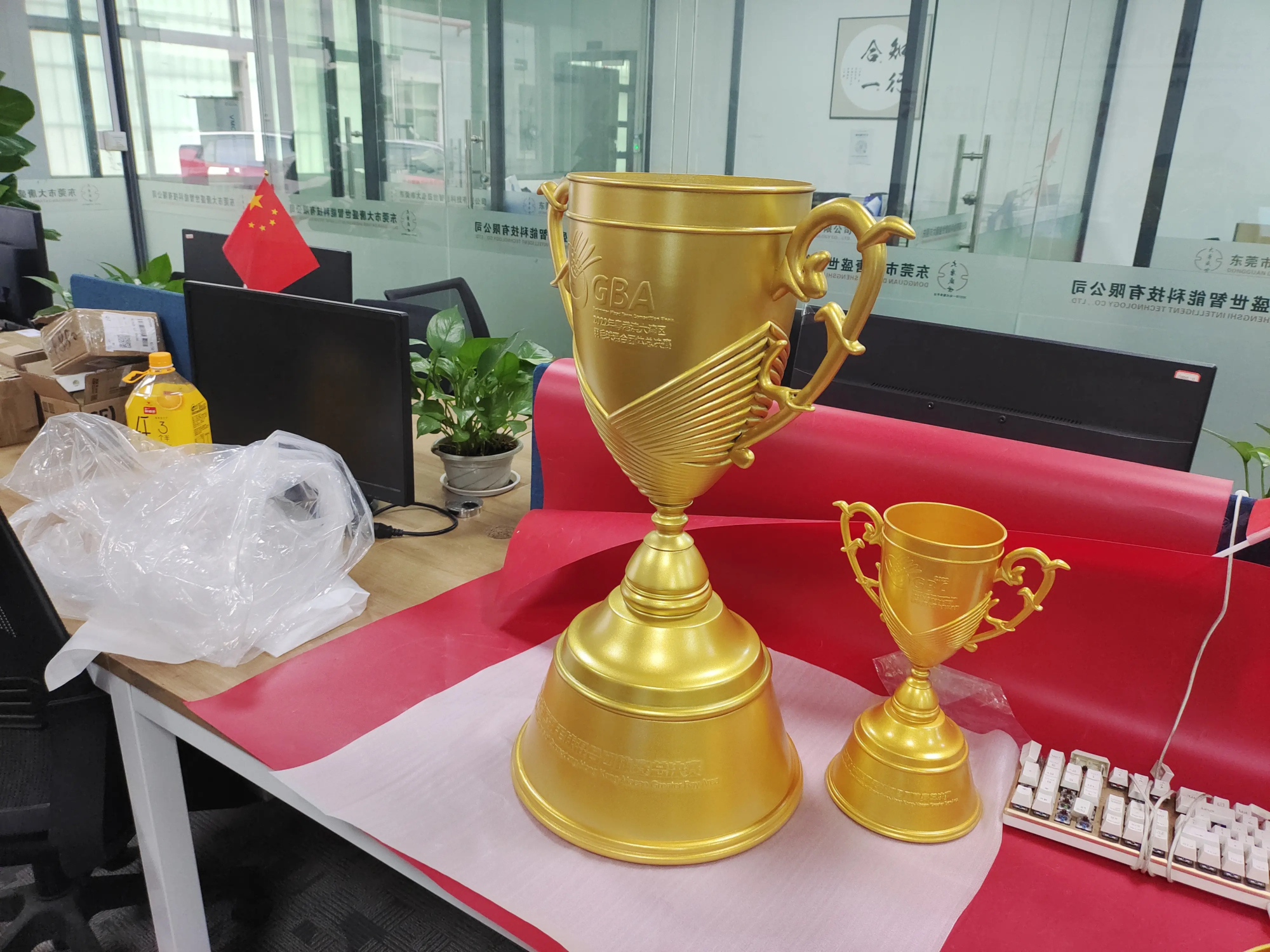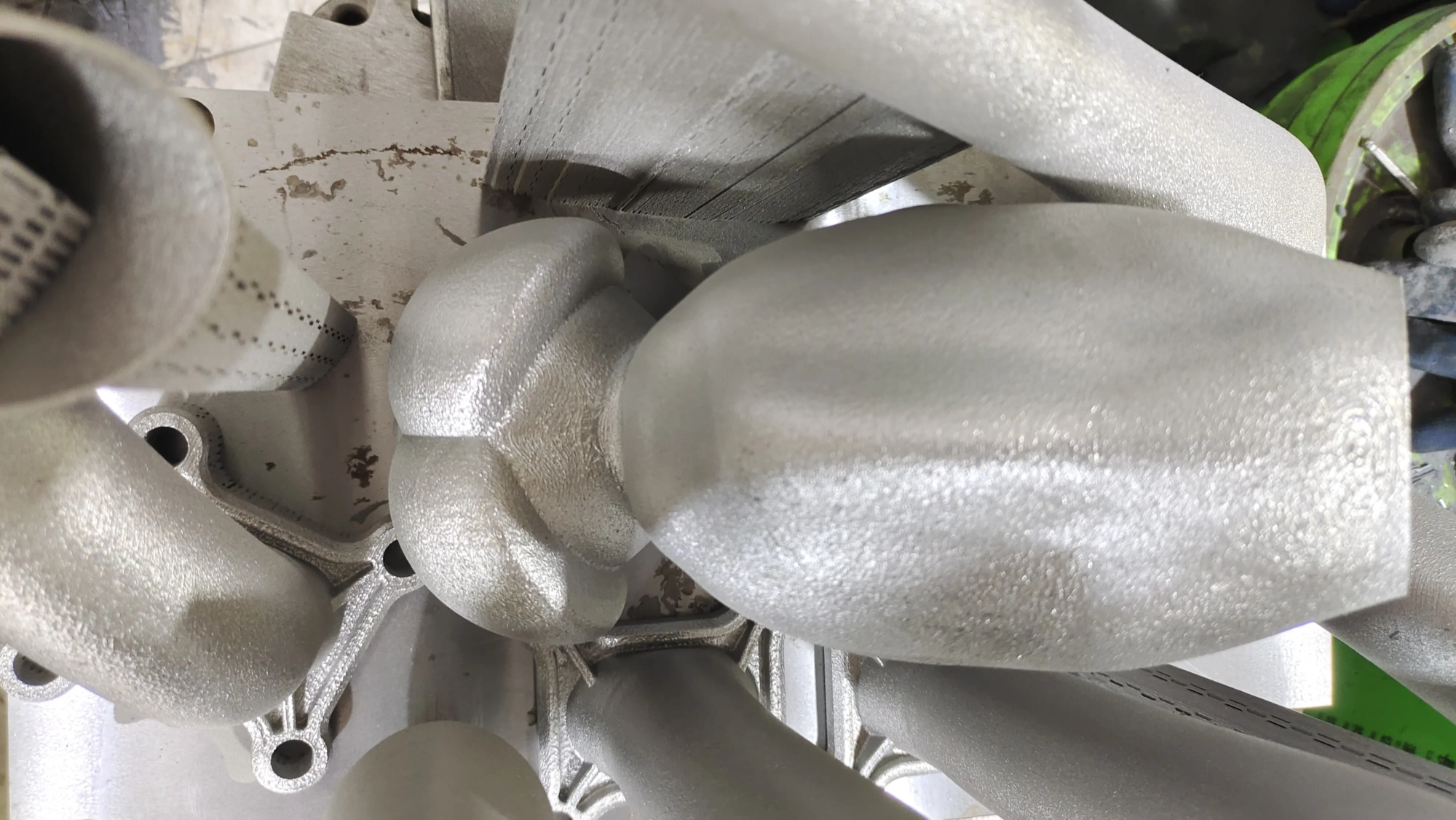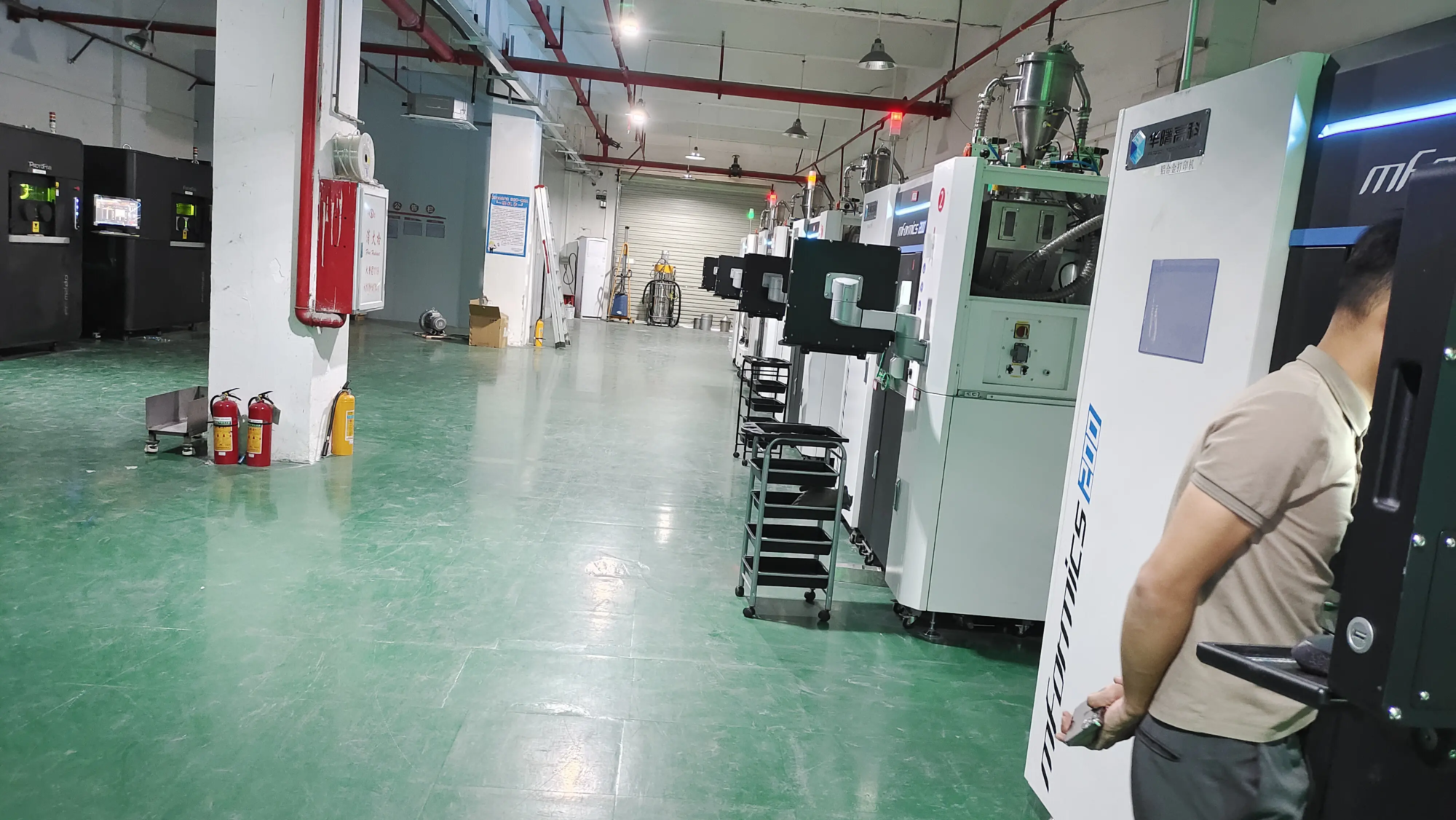Taming Curls: Your comprehensive guide to preventing 3D printed angular warping (especially in metal!)
If you have ever worked so carefully with the CAD masterpiece, loading high-quality materials and hitting your hand, raise your hand "Print," Only after a few hours can I find parts similar to the mini-invented chip? Corner Warping is arguably one of the most frustrating, time-consuming failures in the additive manufacturing industry (AM), which has drawn the mood of amateurs and industry professionals. At Greatlight, as a leading rapid prototyping manufacturer specializing in metal 3D printing through selective laser melting (SLM), we fight this hot green Gremlin every day. This blog is in-depth Why Corners Warp and offers specific, scientifically supported strategies that enable flat size accurate prints every time – with particular focus on the unique challenges of conquering metal.
The culprit was unearthed: Why is the curved?
The basic villain is Thermal stress Depend on Differential cooling. Imagine:
- The heat is starting: Your laser (during SLM or sintering) or extruder nozzle (in FDM) deposits molten material at very high temperatures.
- Initial curing: The plastic filaments or metal powder melt and quickly begin to solidify to the build platform or the previous layer.
- Contraction begins: When the material cools below its solidification temperature, it naturally contract (shrink). This is a feature of the material Coefficient of Thermal Expansion (CTE).
- Corner puzzle: The corner is cool hurry up More than the rest of the print. Why? They have the highest surface area ratio, which means heat scatters from multiple sides into the surrounding air (or establishes a chamber atmosphere) more quickly.
- Pressure building: This rapid cooling at the corner causes them to cure and shrink first. At the same time, adjacent areas cool slowly, keep warmer, bigger and softer for longer. As these areas then calm and shrink, they push greatly toward corners that have solidified and shrunk.
- elevator: If the downward force that keeps the corner layer on the build platform (adhesive) is not enough to resist these huge internal pulling forces, the angles will begin to peel off and curl upwards. Once started, this usually worsens because subsequent layers increase warping force.
Metals expand the challenge:
Warpage affects polymers (such as PLA, ABS or SLS resins), but it is especially agile in metal 3D printing due to the following reasons:
- High melting point and fast cooling: Metals require extremely high heat to melt and experience important thermal gradients during SLM, resulting in higher inherent stresses.
- Large amounts of material shrinkage: Most engineered metals have higher CTEs and shrink more significantly after curing than plastics.
- Substantial specific behavior: Due to its specific thermal expansion and curing properties, it is well known that titanium metals (eg, titanium alloys) (eg, content) (eg, inconel) are prone to warping and cracking.
- Huge stiffness: Unlike some flexible plastics, cured metals are extremely rigid. Once the pressure exceeds the material’s yield point, it deforms (twists) rather than stretches.
Greglight’s Battle Plan: Strategies to Fight the Corner Twisted
Successfully preventing warping is a multi-pronged attack with the focus on managing thermal gradients and maximizing adhesion. Here is how we deal with it, especially with the requirements for metal parts:
Lay the perfect foundation: build board adhesion boost
- Perfect surface preparation: This is not negotiable. For SLM metal printing, it is crucial to remove the removal of oils and residues with the appropriate solvent. It is crucial to follow a careful inspection of the manufacturer’s recommended cleaning protocol.
- Best Platform Heating: The preheating construction platform is Absolutely necessary For metal SLM. It significantly reduces the temperature gradient between the melt pool and the cured portion below, thus minimizing the stress caused by shrinkage. Unlike FDM, this is not optional. It is a control room heating for many alloys.
- High performance base jacket: Forget the basic glue stick. In Metal SLM, Ensure Perfection smooth The best prepared build board is the main adhesion mechanism. Sometimes specialized construction board surface texture or paint is used.
- Strategy Introduction Structure: Used edges, large rafts or specially designed "Mouse ears" At the bottom of the part, especially in the corners. These significantly increase the contact surface area with the build plate, thus providing great resistance to upward bending forces. We often integrate large sacrificial base rings into key parts.
Master the thermal environment: Control is the key
- SLM room temperature optimization: Our advanced SLM printers feature tightly controlled high temperature build chambers. Preheat All The powder bed and remains consistent throughout the construction process, the elevated chamber temperature (usually a few hundred degrees Celsius) greatly reduces the cooling rate and thermal gradient. This can be said to be The most powerful tool Against metal warping. Different gases (argon, nitrogen) and precise flow control are also crucial.
- Heated shell of polymer AM: For SLS or FDM, be sure to use a heated build chamber (critical for ABS, nylon, etc.). A shell maintains ambient temperature, preventing drafts that lead to rapid cooling and lower the overall hot delta. This is sometimes possible even for metal adhesive spraying or DML.
- Minimize draft: Avoid placing the printer near AC vents, doors or windows. The shell is equally beneficial for non-metallic processes.
Victory Design: Engineers Distort Risk
- Chamfered corners (fill/radius): Sharp corners concentrate pressure and cool the fastest. Even adding a small rounded corner (rounded edge) will significantly increase the cross-sectional area and mass of the corner, which has a reduced cooling rate relative to the surrounding material. This distributes the pressure more evenly. This is Strongly recommended For metal parts.
- Unified wall thickness: Avoid large solid parts near thin walls or fins. A large number of areas cool slowly while thin features cool quickly. This difference creates huge internal pressures that swing across the entire part, often manifesting as warping of the curve. The design transition is gradual.
- Direction strategy: Place the critical surface of the part on the build board. Sometimes, oriented towards the corner towards the center of the plate may provide more stable thermal conditions. Avoid cantilevers.
- Hollow section and support optimization: Removing unnecessary internal mass reduces the total amount of shrinking material and minimizes heat imbalance. Strategic support structures not only drapes, but also helps anchor weak edges and corners, just like thermal anchors.
Process parameters: Metal perfect dial
- Low and slow scanning strategies: Leveraging lower laser power and slower scanning speeds, especially near edges and corners, reduces peak temperatures and minimizes local overheating and subsequently rapid cooling. Adaptive exposure and contour scanning strategies are adopted.
- Layer time management: Ensure that the consistent time between the laser channels or layers of the SLS/FDM allows heat to be more evenly dispersed, thus preventing local hot spots. Avoid prolonged pauses in specific areas.
- Materials Important: Learn about your alloys. Some metals have less inherent twist. Discussing high-risk geometry with your AM provider can provide material advice or special handling protocols.
- Cooling protocol: While minimizing gradients is critical, controlled post-build cooling is equally critical. For critical components, in-situ stress relief in the build process or after building with a professional furnace cooling curve can significantly reduce residual stress and offset warpage trends.
- Advanced Protection: Active Twist Compensation
- Simulation software: Use AM construction simulation tools to predict potential distortions and distortions forward print. This allows preemptive adjustments to the orientation, support structure and include "Counterboard" Compensation features in geometry.
- Active upgrade/adaptive basics: Some advanced systems will constantly adjust the build board or scan parameters in the middle to offset the detected warp trend.
Greatlight Advantage: The expertise you can base on
As a rapid prototyping expert in advanced SLM technology, our daily task is to manage thermal stress to eliminate warping. We use:
- Precision calibration construction room: Ensure a specific optimal, stable temperature for each metal alloy.
- Materials Science Expertise: In-depth understanding of alloy curing behavior and stress relief strategies for titanium, aluminum, stainless steel, inconel and tool steel.
- Advanced simulation and process optimization: Predict early issues and adjust laser settings and scanning strategies.
- Active design of AM (DFAM) consultation: You can help you fine-tune your design before designing a printer.
- Processing and finishing: Includes critical heat treatments, such as stress relief under a protective atmosphere.
Conclusion: Flat parts start here
Corner Warping is not necessarily an inevitable blemish on your 3D printing journey. By understanding potential thermodynamics and implementing a strategic combination of adhesion strategies, thermal management, intelligent design modifications and meticulously tuned process parameters, you can consistently achieve flat, authentic and precisely sized parts. This is especially important for demanding metal applications where material properties and properties are critical.
Greatlight understands that rapid prototype success depends on accuracy and first frequent accuracy. Our investment in advanced SLM equipment, strict process control and deep metallurgical knowledge enables us to conquer angular bending and provide highly fusion metal prototypes and end-use parts. Don’t let Warping Derail your project. Embrace the outlined strategies and work with experts leveraging heat mastery to unlock the full potential of additive manufacturing.
FAQs about 3D printing angle warping
Q: Why are my PLA parts warping around the corners? I think PLA is not twisted?
- one: Although PLA is definitely Fewer It happens more easily than ABS or nylon, and it can still distort significantly, especially in case of large parts, thin structures, sharp corners, drafts or incorrect bed temperatures. Ensure excellent adhesion, use fences (even most PLAs) if possible, try the edges, and verify the bed/temperature.
Q: What is the optimal build board temperature to prevent warping?
- one: The heating bed is Critical For the abdominal muscles. Use the shell! Typical bed temperatures range from 90°C to 110°C. Carefully clean the surface and apply reliable adhesive (ABS slurry, dedicated glue sticks, specialized PEI boards).
Q: I’m using raft and edges, but my metal parts are still twisted. What else can I do?
- one: Metal warping requires a multifaceted approach. A smooth rack usually needs to start. In addition to a strong adhesion structure, the focus is on strengthening thermal management – precise indoor temperature and gas flow to your specific alloy. Furthermore, optimized laser parameters (especially scanning speed and power near edges) and strategic part orientation become critical. For complex parts, consult an expert to fine-tune these aspects and possibly adopt simulation.
Q: How many layers of chamber temperature exceed the first layers of metal printing?
- Answer: Absolutely! Maintain consistent high temperature throughout the process All The construction process in SLM is essential for managing thermal stresses and preventing microcracks and cumulative distortions. Cooling gradients occur continuously, and the stable ambient temperature layer of the hierarchy helps minimize these boundary problems.
Q: Can I fix the twisted 3D printing when I’m done?
- one: Slight warping in some thermoplastics able Sometimes it is heated carefully (for example, using a lower heating gun) and physically flattened when warm, but this is risky, usually ineffective, and leaves residual stress behind. Metal parts are often damaged; trying to level them can cause cracking or dimensional changes. Prevention is the best strategy for most.
- Q: How does Greatlight deal with high-risk materials such as titanium to prevent warping?
- one: Titanium alloys (such as TI6AL4V) present huge warping and rupture challenges due to phase transition and high reactivity. Our methods include very precise gas purification (high-purity argon), custom preheating and controlled cooling curves in the chamber, optimized profile scanning strategies, edges near, potential professional scanning modes, reliable support/infrastructure, predictive simulations, usually mandatory pressure-pressure cooling treatment immediately before dismantling from the plate. Expertise running in these narrow processes is crucial.





